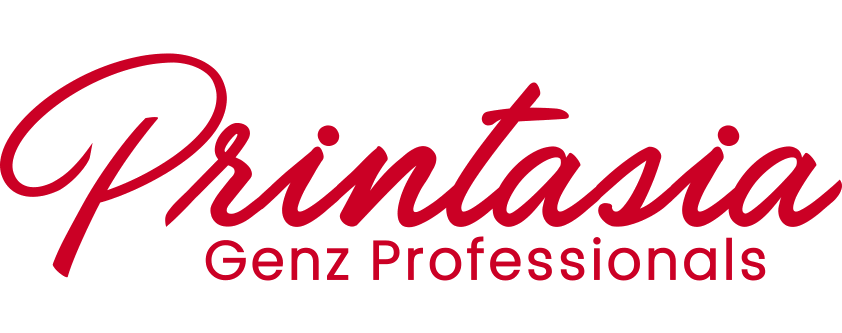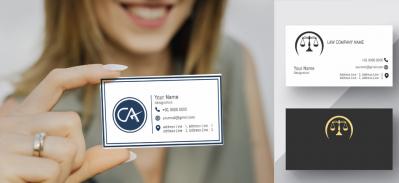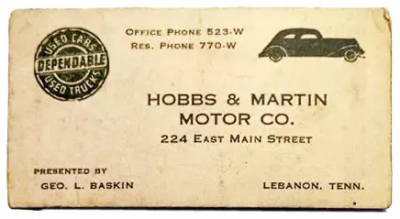Essential Elements Every Chartered Accountant Should Include on Their Visiting Card
Essential Elements Every Chartered Accountant Should Include on Their Visiting Card
In finance, where precision, expertise, and trustworthiness are paramount, Chartered Accountants (CAs) play a pivotal role in ensuring financial compliance, accuracy, and overall health. One often-overlooked yet powerful tool in a CA's professional arsenal is their visiting card or business card. A well-crafted CA visiting card is more than a piece of paper; it reflects your professional identity and the services you offer. In this blog, we will explore the essential elements that every Chartered Accountant should include on their visiting card, ensuring it becomes an effective representation of their expertise, credentials, and trustworthiness.
The Importance of a CA Visiting Card
A CA visiting card isn't just a piece of paper with your contact information; it's a critical representation of your professional identity and the quality of services you offer. Here's why a CA visiting card is essential:
- First Impression: In the business world, first impressions matter. A well-designed visiting card is often the initial point of contact between you and a potential client. It sets the stage for the initial impression, which can significantly impact the decision to engage your services.
- Tangible Representation: Your visiting card serves as a tangible representation of your brand and services. The design, content, and imagery can communicate the essence of your practice and the quality of your expertise.
- Memorability: A memorable and well-designed card is more likely to be remembered by clients who may need accounting or financial services in the future. It increases the chances of potential clients reaching out to you when they require assistance.
- Marketing Tool: Beyond providing contact information, your card can serve as a marketing tool. It's an opportunity to showcase your brand's logo, tagline, and key services. It allows you to market your practice in a compact format.
- Networking: In an industry that thrives on building relationships with clients, other professionals, and businesses, your visiting card facilitates interactions. It's a powerful networking tool that can lead to referrals and partnerships.
With an understanding of the importance of a CA visiting card, let's delve into the essential elements that every Chartered Accountant should include.
- Name and Professional Credentials
Your full name, including any professional credentials such as "CA," should be prominently featured on your visiting card. Your name is your brand, and it's crucial that it's easily recognizable and associated with your qualifications.
- Full Name: Use your complete, formal name on the card. Make sure it's spelled correctly and without errors.
- Professional Credentials: Include "Chartered Accountant" or the abbreviation "CA" next to your name. This immediately communicates your professional qualifications.
- Clear Contact Information
Your visiting card should provide clear and readily accessible contact information to clients who may need your services.
- Phone Number: Include your direct contact number, if possible. Make sure it's a line that is easily reachable.
- Email Address: Provide a professional email address that is monitored regularly. A dedicated email for your practice is preferable.
- Website: If you have a professional website, add its URL to the card. Your website is a comprehensive platform where potential clients can explore your services in more detail.
- Professional Address
Include the address if you have a physical office location where you meet clients. This instils trust and provides clients with a place to visit if needed.
- Office Address: Include the full address, including the city, postal/ZIP code, and any specific directions, if necessary.
- Back-Side Utilization
Don't overlook the back of the card; it provides an opportunity to showcase more about your practice. Use this space to offer additional insights.
- Key Services: You can provide a list of your core services or areas of expertise. This gives clients a quick overview of what you can offer.
- Slogan or Tagline: If your practice has a motto or slogan that encapsulates your approach, include it on the back of the card.
- Business Hours: If applicable, specify your business hours or when clients can contact you for inquiries or appointments.
- Logo and Branding Elements
Your visiting card should align with your professional branding. Incorporate your logo, if you have one, and use consistent colour schemes and fonts that reflect your brand identity.
- Logo: Place your practice's logo in a prominent position on the card. This reinforces brand recognition.
- Color Scheme: Use colours that align with your brand's established palette. Consistency in color conveys professionalism and helps strengthen brand recognition.
- Font Choice: Select fonts that mirror your brand's personality. Typography should be easy to read, and the text should be legible.
- QR Code for Digital Engagement
Incorporating a QR (Quick Response) code on your visiting card is a modern and practical approach. This code can link to your website, LinkedIn profile, or a specific landing page that offers more information about your practice.
- Digital Convenience: A QR code simplifies the process for clients to access more information about your services. Instead of typing in a URL, they can scan the code and instantly connect to the designated online content.
- Responsive Landing Page: Ensure the landing page the QR code links to is mobile-friendly and displays content clearly. An easy, efficient, and visually appealing mobile experience is essential.
- Testimonials or Certifications
If you have received certifications or awards or have positive client testimonials, consider including them on your visiting card.
- Certifications and Awards: Display any relevant professional certifications or accolades that add to your credentials and trustworthiness.
- Testimonials: A brief and impactful client testimonial or a snippet from a favourable review can reassure potential clients about the quality and professionalism of your services.
- Social Media Links
In the digital age, it's beneficial to provide social media links on your visiting card. This allows potential clients to connect with your business on various online platforms.
- LinkedIn: Include a link to your LinkedIn profile, a professional network that's highly relevant for CAs.
- Other Social Media Profiles: If you're active on other professional social media platforms, you can include links to those as well.
- Data Security and Confidentiality Assurance
In the age of data breaches and privacy concerns, providing assurances of data security and confidentiality















